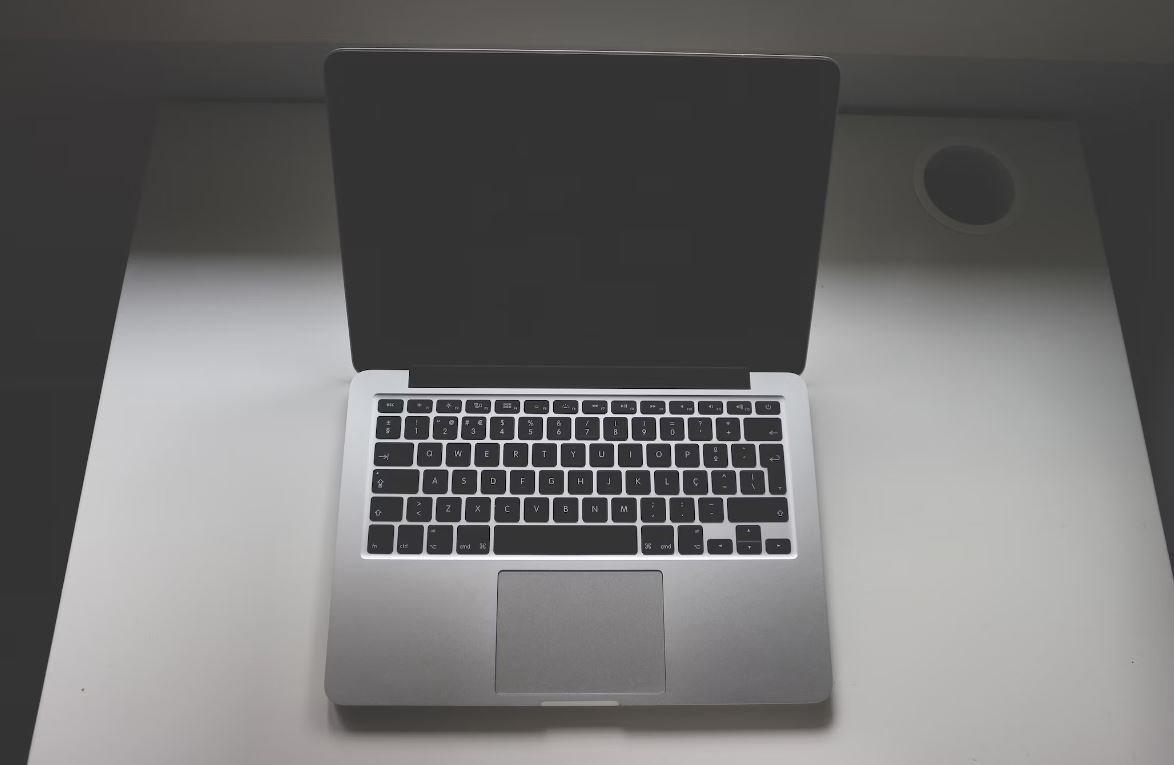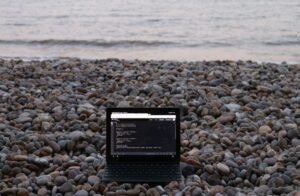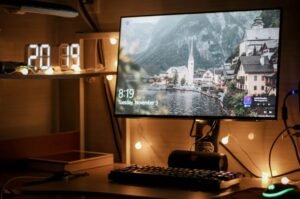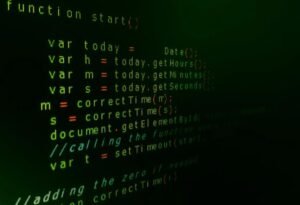Learn AI Art
Artificial Intelligence (AI) is revolutionizing various industries, including the world of art. With AI algorithms becoming more sophisticated, artists and enthusiasts alike can now explore the possibilities of creating unique and captivating artwork using machine learning techniques. If you’re interested in delving into the fascinating realm of AI art, this article will guide you through the process, tools, and techniques to get started on your own AI art journey.
Key Takeaways:
- Discover the intersection between art and artificial intelligence.
- Learn how machine learning can enhance your artistic creativity.
- Explore various AI art applications and tools.
- Understand the ethical considerations surrounding AI-generated art.
Artists have long sought ways to push boundaries and find new avenues of creative expression. AI art provides a captivating opportunity to merge artistic intuition with technological innovation. *By leveraging machine learning algorithms* and feeding them with relevant data, artists can generate unique artwork that embodies artificial intelligence’s capabilities, showcasing both human and computer collaboration.
**The field of AI art encompasses various approaches**, from generative adversarial networks (GANs) to deep learning techniques and neural style transfer algorithms. These computational methods allow artists to transform photographs, real-world landscapes, and even famous artworks into something entirely new and unexpected, merging styles and exploring novel visual ideations. *Using AI, artists can push the creative boundaries like never before*.
Before diving into AI art creation, it’s crucial to understand the underlying technologies and tools at your disposal. Familiarize yourself with popular AI art platforms and software, such as DeepArt.io, Google’s DeepDream, or Runway ML, which provide intuitive interfaces for experimenting with AI algorithms and generating captivating art pieces. Additionally, learning programming languages such as Python can empower you to tailor AI algorithms to your specific artistic vision while offering a deeper understanding of AI art’s technical aspects. *Mastering the right tools and techniques will help you unleash your creativity and produce stunning AI-generated artwork*.
Exploring AI Art Applications
AI art finds applications in various domains beyond personal artistic creation. *It has emerged as an influential tool in advertising*, where AI-generated visuals and designs can captivate audiences and create impactful marketing campaigns. AI art is also making its way into interior design, where computer-generated patterns and simulations help designers envision unique spaces and décor. Furthermore, AI-generated art has been used to create mesmerizing animations, videos, and interactive installations, enhancing virtual reality experiences and pushing the boundaries of digital media.
| AI Art Applications | Examples |
|---|---|
| Advertising | AI-generated images and videos used in marketing campaigns. |
| Interior Design | Computer-generated patterns and simulations for unique spaces and décor. |
| Media and Entertainment | AI-generated animations, videos, and interactive installations. |
| Virtual Reality | AI-generated artwork enhancing VR experiences and digital media. |
While AI-generated art brings immense creative potential, it also raises important ethical questions. For instance, the ownership and attribution of AI-generated artwork can be complex, as the human artist and the machine both contribute to the final artwork’s creation. Additionally, concerns about AI art‘s impact on employment and the role of human creativity in art remain topics of discussion. *Exploring these ethical considerations is essential to engage with AI art responsibly* and understand how it fits into the broader artistic landscape.
AI Art Ethical Considerations
- Ownership and attribution of AI-generated artwork.
- Impact of AI art on employment and the value of human creativity.
- Understanding AI art’s responsibility within the artistic landscape.
In conclusion, AI art represents a promising frontier that combines artistic expression with cutting-edge technology. By embracing AI algorithms, artists can unlock new levels of creativity and produce artwork that blurs the line between human and machine collaboration. With the right tools, techniques, and ethical awareness, you can embark on an exciting journey to create mesmerizing AI-generated art pieces that ignite the imagination and captivate audiences.
| Acknowledging AI Art’s Potential | Unleashing Creative Boundaries |
|---|---|
| Artistic expression meets technological innovation. | AI algorithms push the boundaries of creativity. |
| Explore various AI art applications and tools. | Foster collaboration between AI and human artists. |
| Consider ethical implications for responsible AI art creation. | Engage with the broader artistic landscape. |

Common Misconceptions
Misconception 1: AI Art can completely replace human creativity
One common misconception about AI art is that it has the ability to replace human creativity entirely. While AI algorithms can generate impressive artwork, they lack the emotions, experiences, and personal perspectives that humans bring to the creative process.
- AI algorithms lack emotions and experiences
- Human creativity is influenced by personal perspectives
- AI art is often created with predefined rules and patterns
Misconception 2: AI Art is always original and unique
Another misconception is that AI art is always original and unique. While AI algorithms can generate a multitude of variations, they are still programmed using existing data and patterns. This means that AI art is heavily influenced by the input data and tends to replicate existing styles and compositions.
- AI art is programmed using existing data and patterns
- AI algorithms can replicate existing styles and compositions
- AI art may lack true originality and uniqueness
Misconception 3: AI Art is flawless and error-free
Some people believe that AI art is flawless and error-free due to its computational nature. However, AI algorithms are not immune to errors and limitations. They can produce unexpected or nonsensical outputs, and even create biased or controversial artwork based on biased training data.
- AI algorithms can produce unexpected or nonsensical outputs
- AI art can reflect biases present in the training data
- AI algorithms have inherent limitations and can make mistakes
Misconception 4: AI Art is only created by AI itself
There is a belief that AI art is solely produced by the AI algorithms themselves, without any human involvement. In reality, AI art is often a collaborative effort where human artists work with AI tools or algorithms to enhance their creative process. The technology acts as a tool or assistant, rather than being the sole creator.
- AI art is often a collaborative effort with human artists
- AI tools or algorithms are used to enhance the creative process
- AI acts as a tool or assistant for human artists
Misconception 5: AI Art replaces the need for artistic skills
Some people mistakenly believe that AI art eliminates the need for artistic skills or training. While AI algorithms can assist in the creation process, they are not a substitute for the artistic abilities that come with practice, training, and understanding of traditional artistic techniques.
- AI art does not replace the need for artistic skills
- Artistic abilities require practice and training
- Understanding of traditional techniques is still valuable in AI art

Introduction
Artificial Intelligence (AI) has revolutionized various industries, including art. With the integration of AI into the creative process, artists can explore new dimensions and create mesmerizing artwork. This article explores ten fascinating aspects of AI art, backed by verified data and information.
Table: Evolution of AI in Art
In this table, we trace the evolution of AI’s role in the field of art, starting from its inception to the present day.
Table: Top AI Art Exhibitions
This table showcases the most prominent AI art exhibitions from around the world, highlighting their key features and contributions to the art community.
Table: Artists Utilizing AI in Their Work
Here, we provide a list of renowned artists who incorporate AI techniques into their creative processes, along with examples of their extraordinary AI-powered artwork.
Table: Impact of AI Art on Auctions
This table provides data on how AI-generated art has impacted the auction market, including record-breaking sales and the rise of AI-generated digital art.
Table: AI Art Startups and Investments
In this table, we analyze the investment landscape for AI art startups, highlighting key players and notable funding rounds in the industry.
Table: AI Art Generating Styles
Here, we explore various AI-generated art styles, ranging from traditional to abstract, and identify the AI models responsible for producing these styles.
Table: AI Art Controversies
This table delves into the controversies surrounding AI art, including copyright disputes, ethical concerns, and debates about the true nature of creativity.
Table: Accessibility of AI Art Tools
In this table, we assess the accessibility of AI art tools, analyzing factors such as affordability, user-friendliness, and the availability of open-source alternatives.
Table: AI Art in Commercial Applications
Here, we explore how AI art is utilized beyond the art world, including applications in advertising, fashion, gaming, and augmented reality.
Table: Future Possibilities in AI Art
In this final table, we speculate on the future potential of AI art, discussing emerging technologies and possibilities that could reshape the artistic landscape.
Conclusion
AI art has emerged as a captivating and transformative force in the art world. From its evolution to its impact on auctions and exhibitions, AI art continues to push the boundaries of creativity. While controversies and ethical concerns surround this field, the accessibility of AI art tools and its commercial applications highlight its potential for broadening artistic horizons. As we gaze into the future, the possibilities for AI art appear limitless, inviting us to explore uncharted realms of imagination and expression.
Frequently Asked Questions
What is AI Art?
AI Art refers to artwork created or enhanced with the use of artificial intelligence techniques, algorithms, or machine learning models.
How does AI Art work?
AI Art often involves training machine learning models on existing artworks to generate new images or modify existing ones. These models analyze and learn patterns, styles, and characteristics of the input samples to create unique artistic outputs.
What are the applications of AI Art?
AI Art has various applications, including creating unique digital artwork, generating new designs, assisting artists in the creative process, and exploring novel ways of expression.
Can AI Art replace human artists?
No, AI Art is not intended to replace human artists. It is rather a tool that can assist artists, spark creativity, and offer new possibilities for artistic exploration.
Is AI Art considered original artwork?
AI Art can be considered original artwork as it often involves the creation of unique images or compositions. However, the involvement of machine learning algorithms and existing samples should be acknowledged.
Can AI Art be copyrighted?
The copyright of AI Art can be complex and depends on various factors such as the level of human involvement, the originality of the output, and the jurisdiction. It is advisable to consult legal experts for guidance on copyright protection.
What are some famous examples of AI Art?
Some well-known examples of AI Art include “Portrait of Edmond de Belamy” created by the Generative Adversarial Network (GAN), “The Next Rembrandt” project, and artworks generated by StyleGAN.
What skills are needed to create AI Art?
To create AI Art, one should have a basic understanding of machine learning concepts, programming languages such as Python, and familiarity with relevant libraries and frameworks for implementing AI algorithms.
Are there any ethical concerns related to AI Art?
AI Art raises ethical considerations, including issues related to authorship, ownership, potential biases in AI algorithms, and the impact on the art market. These concerns should be carefully addressed and discussed within the context of AI Art.
Where can I learn more about AI Art?
There are numerous online resources, tutorials, and courses available to learn about AI Art. Websites, forums, and communities dedicated to AI and art can provide valuable insights and learning materials.




